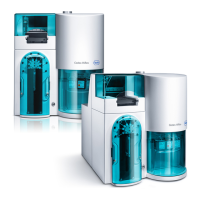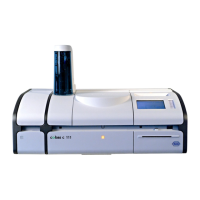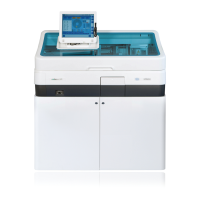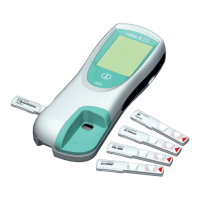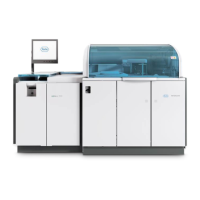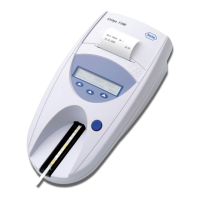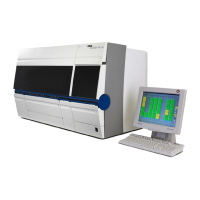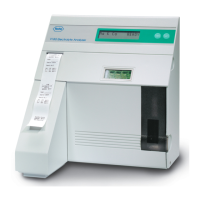Roche Diagnostics
Operator’s Manual · Version 3.4 G-5
Cedex Bio analyzer Glossary
dead volume - ISE Reference Electrode
dead volume The amount of residual sample material
in a sample tube or cup.
default QC An automated process for performing
multiple QC measurements at the time when you define
the QC orders.
default value A set value registered in advance (initial
setting).
diluent Ready to use liquid used for sample, control
and calibrator dilution.
dilution factor A preset dilution ratio that is used by
the analyzer to perform a requested dilution.
disposable Typically a plastic tip, vessel, or cuvette
that is discarded after a single use.
dynamic range The reportable range of an assay. This
range extends from the lower detection limit to the limit
of linearity.
E-stopped A status indicating that the system has
performed an emergency stop. This could be due to
hardware failure or because any of the safety devices have
requested an emergency stop.
expected range The pre-defined range of test result
values expected for a defined group of materials. Also
known as normal range or reference range.
expected value A value for a test result that can be
considered as a normal result.
expiration date Also called the expiry date. The end of
a period until which Roche Diagnostics guarantees
product claims for its reagents, calibrators, and controls.
extended dynamic range The measuring range for
an assay at its highest dilution.
factor Ratio between the assigned calibrator value and
the measured absorbance value for the calibrator and
zero calibrator.
filter A process that sorts data for viewing,
documenting, or printing according to pre-defined
criteria
flag An identifier used to call an operator's attention to
a result.
global action button See global button.
global button A button that allows access to the global
software screens and that can be used at any time. For
example, <Start>, <Stop>, or <Alarm>.
home position The position to which a certain part of
the analyzer returns on reset. The start position of a
mechanism.
host computer 1. A computer used for overall
management and control of the computer network.
2. A laboratory computer that stores and processes
requests and results. A host is able to communicate with
analytical instruments.
host communication Data exchange with a
laboratory information system (LIS).
host interface protocol A technical description that
defines data transfer between a host computer and an
analytical system.
Initialization Also known as Initializing. The
operational mode of an analyzer that occurs immediately
after power on and during which the analyzer prepares
itself for operation.
installing applications Process of making the
application available for testing, as opposed to importing
the application data, which just saves the data on the
system.
interval QC A streamlined process of performing (all)
due QC measurements (for QC that needs to be
performed periodically.)
ISE Abbreviation for ion-selective electrode.
ISE Reference Electrode The electrode through
which the ISE Reference Solution flows to set the
electronic baseline to zero for ISE measurement.
E
F
G
H
I
